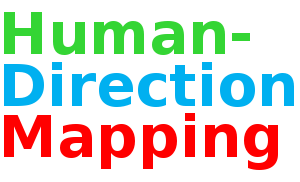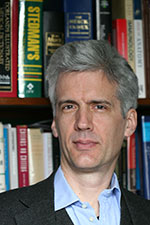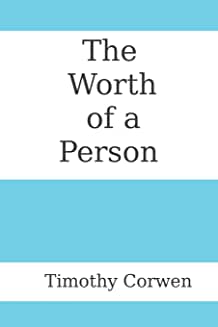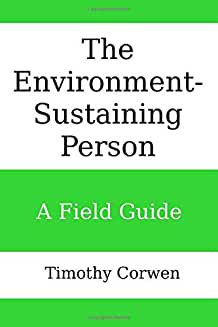
Where to Find Guidance If Your World Falls Apart?
What Is Human-Direction Mapping, and How Is It Related to Other Approaches to Guidance in Life?
Timothy Corwen :: Human-Direction Mapmaker :: tcorwen@humandirectionmap.com. Please note: due to the pressures of work, I am only able to reply to communications that make a constructive, substantive contribution to better human-direction maps. I thank you for your encouragement and will ignore hostile remarks, but I will not be able to reply to either of them.
Page version: September 1, 2022. For a full-length version of this page, see the article “The Origins of HDM”.
When faced by a crisis, we have several choices of where we seek protection and help. These lie on a spectrum from an omniscient and omnipotent God (assuming one exists), to the great forces of the State (socialism), to family or community care, to the patronage of someone with the power to help us, to the insight and example of someone wiser than ourselves, and finally, to the strength and resilience we may find within our own person. It is to the last of these, the thinking-for-oneself approach, that this website is largely devoted, because help from others can be in short supply – even God may be unresponsive – and often such support fails to be based on any understanding who we are and comes at the cost of our independence and of our self-determination and growth.
So, where do we find guidance and strength in ourselves when our world falls apart, when everything disintegrates around us, leading to a fracture in our circumstances, in our daily routines and social networks, even our cultural autopilot? Such fractures are sometimes an unmitigated disaster, but they can also be an opportunity to see what is really happening around us (including who our true friends are) and what fresh solutions there might be to our problems, what new avenues for development we might pursue. Indeed, as we shall see, learning to generate such fractures for ourselves in our customary thinking and acting is an essential part of creativity and growth, both as individuals and as groups. And what is clear is that original thinkers, inventors, artists, and survivors all share a basic method to take advantage of such fractures in their reality. What is that method, and what part does human-direction mapping (HDM) play in all of this?
My own discovery of that basic method started many years ago when I left my US Midwest liberal arts college in my third year to take up a classical studies program in Athens, Greece. This move led to a threefold fracture: First, being in a new place is always a challenge in itself. Second and even more difficult was the need to adjust to a new language and radically different culture. And finally, I arrived in Greece shortly after the fall of a military junta and the reintroduction of democracy, with Greek society in turmoil, recovering from tyranny, and not quite ready to embrace democracy. Just going for a walk through the streets of central Athens to go to class could involve sudden encounters with violent street protests.
Even when there was no riot underway, Greece had a culture where shoving someone in a public space was regarded as wholesome social contact (something I found deeply unsettling), while maintaining a physical distance was regarded as aloofness and a sign of contempt for others – for example, a trip to the post office to mail a letter home was often fraught with conflict, with people pushing and shouting in the long lines. Further, not arriving on time (or at all) for a scheduled meeting was seen as a natural and perfectly reasonable response to the daily cycle of life’s constant changes. Work always came much behind family and friends, football and politics – and hard work was regarded as a failure of intelligence and a sign of weakness of character, not as a virtuous pathway to success as I had been taught from childhood.
So over the years that followed, returning repeatedly for ever-longer stays in Greece and trying each time to adapt, I was forced to examine and move on from each of the conventional approaches to guidance in life that society offered, until I uncovered the basic method that has been used by creative and resilient individuals throughout history.
Contents
- If your world falls apart, where can you find guidance? (moving to Greece)
- Eight conventional approaches to guidance in life: their strengths and limitations
- A basic method for dealing with fractures in life
- Applying the map-and-engage method in everyday life
- Do we have to rethink everything from scratch each time?
- Healing a fractured self
- Further circuiting to related topics on this website and elsewhere
- Sources
- Addendum: map-and-engage method used by a great composer
Eight Conventional Approaches to Guidance in Life: Their Strengths and Limitations
What, then, were the conventionals approaches to guidance in life that I found unhelpful? There are eight such approaches available, and both while in Athens facing the threefold fracture of my life, and before and after, I have explored each of these – in many cases, repeatedly (for more details regarding these conventional approaches, their strengths and weaknesses, see the full-length article, “The Origins of HDM”).
The first approach is one that starts from childhood: relegation, where we let someone else decide for us. We do what we are told. In my own case, like any child, I was advised to do what my parents or teachers told me was best for me and others. And yet, part of growing up is thinking for yourself, and I soon outgrew this approach. Closely related to relegation is a second approach – sheltering in a group and going where it goes. This was in fact a common approach taken by my fellow Americans living in Greece (and by expats from many other countries). But I wanted to learn new ways of doing things and immerse myself in the local culture, not pretend I had never left my country of origin, so this approach was not the solution for me.
Outgrowing relegation of decision-making, whether individually or as part of a group, does not necessarily mean, however, becoming indifferent to guidance from those around one; the third approach is a related but more responsible one: imitation, or following the inspiration and example of a personal mentor or a great figure in history. But I never found a suitable role model to imitate.
Back to Contents for this article
The fourth approach to guidance in life is one that, like sheltering in a group, has seen a remarkable resurgence in popularity in recent years: be guided by your feelings. In this view, thought or evidence is not required, because what you feel is the best guide to what is real for you and what you should do. But feelings come and go, and being guided by them makes you extremely vulnerable to manipulation by tyrants, bullies, and group hysteria (e.g., on Twitter). And in my case, being swept up in the febrile emotions of a Greece demonstration and hurling a brick at the American embassy would not have helped me understand things more clearly.
The fifth option for guidance in life involves something more stable and capable of supporting us in persevering against public fashions and mass hysteria, and in the face of otherwise overwhelming crises: follow assert and urge. As the term indicates, this usually has two parts: an assertion and something we are told to do as a result of it. But assertions like “you only live once, so make every moment count,” while they can help with instant motivation and perspective at critical times, lack much substantiation. They do not help us to understand.
There is more thought in, and usually some evidence behind, the sixth approach: tips and techniques, which is favored by self-help books, for example. One classic self-help guide for making friends advises you to become genuinely interested in them, smile, recite their name, be a good listener, talk in terms of the other person’s interests, and make them feel important (Carnegie, 1936). But, while this is good advice in general, some people may take advantage of your interest, and part of being a good friend to them may also be knowing where and how to set boundaries, insisting they show some interest in you as well and respect your worth (for more on this, see my book The Worth of a Person).
The fragmentation we find in both assert and urge and tips and techniques leads us directly to the seventh conventional approach, the most systematically organized and widely proselytized guidance of all: religion. But this approach also depends entirely on your experiencing the presence of the divinity in your life, and I (as is true for many others) have simply never encountered that presence. Furthermore, even devote believers can find religious guidance to be somewhat cryptic at times; sometimes we just have to think for ourselves.
The eighth and last of the conventional approaches to guidance in life is follow the science, because science is based on facts (data) collected (generally as numbers), which are formulated into an equation, algorithm, or theory, which in turn is then constantly tested, refined, perhaps verified or refuted. So if you have a question about how to understand and approach something in your life, you apply the scientific method to the situation involved, or you look at the scientific research and the equations, algorithms, or theories that have resulted from that, and act accordingly.
Science when it works out is our most reliable approach to gaining knowledge about the world, but it is best suited for situations where large volumes of data can be collected, or precise measurements in a controlled setting can be taken. Scientists refer to individual cases as “anecdotal” and (what are worse) unusual individuals as “outliers”; the problem for me is that most of my life has been anecdotal, and more often than not, I have been an outlier – something that was especially true for my time in Greece.
Back to Contents for this article
A Basic Method for Dealing With Fractures in Life
If none of the eight conventional approaches to guidance was of much help, what was the approach I finally discovered, and how did I reach it? I found myself returning to the time before Aristotelian logic dominated how we think (the need to return to the pre-Socratic thinkers was a suggestion put forward by the Existentialist philosophers I was reading at the time). In particular, I needed to return to the basic, underlying faculties of thought: awareness cluster gathering, fracture, suspension (lifting ideas and feelings and holding them suspended in one's thoughts), jostling of ideas and feelings, clear- and vague-sensing, and pattern formulation (for the details of these, see the article “How to Think Creatively,” currently in preparation).
What I managed to clarify was something I decided to call the map-and-engage method, involving a cycle that starts with gathering as much relevant (and perhaps seemingly irrelevant, but related) information as feasible and assembling a working mental cluster of images, ideas, feelings, and other entities in my awareness. That is followed by fracturing and lifting those entities in my awareness, for one can not be certain what was going to fit where or what it would mean before the process was complete, so they needed to be shaken loose from their conventional identities and positions. The next stage, then, is to hold that cluster of thoughts and feelings suspended and jostle both the vague and clear elements in it, perhaps for days or weeks, or even by taking it up repeatedly over many years, so that one can at some point lay down a map of the situation (perhaps only a tentative map), and find a clear and stable pattern in which each element was identified. That map is usually rendered as notes in a journal perhaps, a sketch on paper, or a completed artistic work of fiction, a play, a painting, or a musical work (for more details on the cycle of the map-and-engage method, see the full-length article, “The Origins of HDM”).
Having a map of a situation that seems to fit together is not the end of this process: The map needs to be verified and probably corrected, first by checking it for completeness, consistency, and coherency, and then by using it to engage the relevant domain of my experience. Does that map facilitate responsive contact – that is, does it put me in touch with that reality in my life in a way that gives me an accurate picture of it and some ability to control it or position myself effectively with regard to what was happening there? In the case of a creative work, does it come to life when exhibited or presented, and do viewers or the audience respond to it? Finally, further verification is the last stage in the cycle, which involves seeking other sources of confirmation, usually by trying the map in similar or related aspects of my experience (something I refer to as multiangulation) to see if it gives me responsive contact there as well.
Back to Contents for this article
Applying the Map-and-Engage Method in Everyday Life
My discovery of this method was not some Damascene conversion that fundamentally and immediately changed my life and my beliefs. Rather it began in a small way by helping me to find spots of order in the midst of the chaos that was my life in Athens and in other aspects of my life. It enabled me to begin to address little things like going to a Greek post office and facing all of the pushing that went on there. It was only much later that I gradually saw how the same method could be extended to creativity in general, and to answering some of the bigger questions in my life, such as where and how to find a sense of worth and of purpose and meaning in life.
A visit to the post office in Athens, then, was one of the places where I first discovered and learned to apply the map-and-engage method. As I struggled to keep my position in line and send my letters, I began by gathering information – in fact, I had no choice but to do so, because every encounter was eventful. And because it was eventful, I could not help myself but think about what was happening, thus assembling a working cluster of impressions, thoughts, and feelings. And because my normal assumptions and ways of doing things were completely wrong, and I knew it, the work of fracture was done for me – all of my normal ideas about how to act in a public place were shattered by the shear turmoil and my frustration. Lifting that cluster, then, was easy because I didn't have a settled view anyway; it was all new to me (for more details on how this process works, see the long version of this page, “The Origins of HDM” and the article “How to Think Creatively,” currently in preparation).
So for a long time, I held suspended and jostled the impressions, ideas, and feelings I had gathered, assembled, fractured (largely done for me), and lifted. One intriguing outcome I saw quite often was two people arguing violently, and then afterwards as they left the post office seeming to become best friends. Then I made the acquaintance of a couple who were accustomed to having violent quarrels, followed by passionate reconciliations, which was apparently what was keeping their relationship alive. Because I was still holding my ideas about behavior in the post office suspended, I was able to bring in that image and bounce it off what I had seen and felt over the years, until I finally reached a map I could lay down: I realized that Greeks pushed in public spaces because it gave them a sense of social connection. The people in the Greek post office were acting in a milder way like couples who fight and make up to avoid an emotional vacuum and to renew the intensity of feelings in their relationship.
But could I verify that map? I tested it by trying on one occasion, for example, to respond with a bit of banter when a little old lady dressed all in black pushed me from behind. And I did indeed find responsive contact facilitated by my map, because she responded with repartee and a warmth of fellow-feeling that confirmed my new understanding. And over the years that followed, I found my interpretation held true in other settings: One afternoon in a nearly empty movie theater, a couple came in, sat directly behind me, and then the man asked me to move my head because it was blocking his view. Instead of getting exasperated and pointing out that there were only six seats occupied in the entire cinema, and he could easily have sat somewhere not behind me, I smiled and told him not to be an idiot but to sit somewhere else, and he got up grumbling and cursing but quite happy with the contact, and moved to another seat.
And there I was, a Midwestern American boy who had learned how to deal with this one small aspect of a foreign culture, and done so not by imposing my own cultural principles, but by thinking and mapping, engaging the reality, and finding responsive contact.

Back to Contents for this article
Do We Have to Rethink Everything From Scratch Each Time?
All of these stages of the map-and-engage method seem rather complicated to have to go through each time we face a nonroutine situation. But part of our gaining experience in life is building up our own map registry of things we have encountered and worked out in the past using the map-and-engage method (perhaps not with the best understanding of what we are doing, indeed often without realizing it). Furthermore, it is possible to build more general map registries for use by others and to share those, or adopt the maps made by others.
Back to Contents for this article
Healing a Fractured Self
But collecting a set of situation maps does not necessarily lead to their all adding up to a coherent sense of one's life and person. Indeed, it is often too easy for the maps I accumulate to start to come into conflict with each other, and as challenging as fractured realities can be, the fracturing of my person – of who I am, what I am about, how I relate to others, and where I am seeking to go in my life – can present an even greater source of unhappiness, for it strikes at the very heart of my existence. To cite one very common example: My competence at work may raise my personal status but have a negative impact on my family life.
Human-direction mapping is the name I have given to this endeavor to address both individual issues of guidance and the broader and deeper issues of a fractured and alienated self. This website and my books on human-direction mapping use the map-and-engage method to attempt to uncover and clarify the features, dynamics, and faculties that lie beneath our attempts to set directions for ourselves and try to reach them, and to put together a life and a self that are coherent, happy, and worthwhile.
Further Circuiting to Related Topics on This Website and Elsewhere
We all use the basic map-and-engage method to some extent, generally without recognizing the fact, but the most innovative and original thinkers, such as Tim Berners-Lee, the inventor of the World Wide Web, do so with a more advanced set of skills. In particular, they show a remarkable capacity to gather and hold a cluster of inklings, hunches, perceptions, images, ideas, and feelings – jostling and vague-sensing them, perhaps for long periods of time, sometimes decades (Berners-Lee, 2000, p. 3). The question of how we can each develop these skills will be addressed in the next article of this website (“How to Think Creatively,” currently in preparation; see also Johnson, 2010), which is to be the first article in a brief tour of the major features and dynamics of a basic human-direction map.
Further, to see an example of how this method has been applied to the different layers of worth in a person and how to advance those in concert, see my book The Worth of a Person; while for the question of what is needed for individuals and groups to adopt and maintain environmentally sustainable ways of life, see The Environment-Sustaining Person.
Sources
Berners-Lee, T. (2000). Weaving the Web: The original design and ultimate destiny of the World Wide Web. Harper Business.
Carnegie, D. (1936). How to win friends and influence people. Simon and Schuster.
James, W. (1890). The principles of psychology. Henry Holt.
Johnson, S. (2010). Where good ideas come from: The natural history of innovation. Penguin.
Back to Contents for this article
Addendum: The Map-and-Engage Method Used by a Great Composer
William James, in his work The Principles of Psychology, gives the following example of the creative process, which clearly involves at least the early stages of the map-and-engage method: “Mozart describes thus his manner of composing: First bits and crumbs of the piece come and gradually join together in his mind; then the soul getting warmed to the work, the thing grows more and more, 'and [as Mozart describes the process] I spread it out broader and clearer, and at last it gets almost finished in my head, even when it is a long piece, so that I can see the whole of it at a single glance in my mind, as if it were a beautiful painting or a handsome human being; in which way I do not hear it in my imagination at all as a succession – the way it must come later – but all at once, as it were. It is a rare feast! All the inventing and making goes on in me as in a beautiful strong dream. But the best of all is the hearing of it all at once'” (James, 1890, ftn 232, p. 290).
URL for this page: https://humandirectionmap.com/index.html
© 2017-2022 by Timothy Corwen. An earlier version of this new homepage was first posted on November 12, 2020; a previous WordPress version of this site was published starting on August 30, 2017.
(GDPR: This site does not use cookies; your visit will not be recorded by me.)

